(Goverment of Angola) The Ministry of Mineral Resources, Petroleum and Gas (MIREMPET) launched a public consultation on Monday, December 15th, on the proposed Biofuels Law, a strategic document aimed at laying the foundations for a more diversified, sustainable, and socially just
QUOTE OF THE WEEK -- Allen Schaeffer
The undeniable and tremendous improvements in air quality we enjoy today are thanks in part to new engines, clean air technology, and cleaner fuels. ... Access to a growing supply of renewable fuels is a key aspect of sustainability for users and for engine technology. Engines work well using a diversity of renewable fuels; more please! -- Allen Schaeffer, Executive Director of Energy Technology Forum READ MORE
Davids, Colleagues Introduce Bipartisan Bill to Boost Sustainable Aviation, Support Farmers, Grow American Jobs
(Office of U.S. Representative Sharice Davids (D-KS-03)) U.S. Representative Sharice Davids (D-KS-03) — alongside Representatives Mike Flood (R-NE-01), Troy Carter (D-LA-02), and Tracey Mann (R-KS-01) — introduced the Securing America’s Fuels (SAF) Act, bipartisan legislation designed to strengthen the sustainable aviation fuel (SAF) industry, create economic opportunities for farmers, and reduce emissions in the transportation sector.
“Investing in sustainable aviation fuel isn’t just good for the environment — it’s good for Kansas farmers, our communities, and our economy,” said Davids. “The SAF Act ensures that clean fuel production incentives are strong and long-term so businesses, farmers, and innovators can plan for the future with confidence. The bipartisan support shows the incredible potential we have to build a healthier, stronger, and more prosperous future for generations to come.”
“America is on the cusp of the next great biofuels revolution,” said Representative Mike Flood (R-NE-01). “The Securing America’s Fuels Act is yet another way Congress can grow our bio economy and encourage innovation that creates great jobs across rural America. Sustainable aviation fuel will help lower emissions while expanding domestic markets for our nation’s farmers, ensuring that our ag economy thrives for generations to come. I want to thank Congresswoman Davids for introducing this much-needed bill and look forward to working together to advance this commonsense, bipartisan bill through Congress.”
The sustainable aviation fuel (SAF) industry currently relies on the 45Z Clean Fuel Production Tax Credit to make production economically viable. While recent legislation extended the credit for all clean fuels, it eliminated the SAF-specific bonus. To address this challenge, the SAF Act would:
- Reinstate the SAF bonus credit eliminated under the recent federal budget, allowing qualifying SAF producers to receive up to $0.35 or $1.75 per gallon.
- Extend the 45Z Clean Fuel Production Tax Credit for all clean fuels through 2033, providing long-term stability for the growing clean fuels industry.
SAF is a game-changer for local communities, agriculture, and the transportation industry. Scaling SAF to meet U.S. goals could generate 33,000 construction jobs over five years, sustain 4,500 permanent operations jobs, and support 60,000 jobs in agriculture and logistics by 2030. SAF can also reduce lifecycle greenhouse gas emissions by up to 80 percent, delivering major environmental benefits while using existing aviation infrastructure.
"Without coordinated action between government and industry, greenhouse gas emissions will continue to increase as more people and goods fly through our skies,” said Representative Troy Carter (D-LA-02). “Sustainable aviation fuel is an exciting, new green fuel that’s creating jobs in Louisiana and driving demand for American agricultural products. I’m proud to introduce this bipartisan legislation to ensure America is on track to meet the growing demand for cleaner transportation and healthier communities.”
“Sustainable aviation fuel is a worthwhile investment for American agriculture and for American energy dominance,” said Representative Tracey Mann (R-KS-01). “The Securing America’s Fuels Act gives Kansas farmers the certainty they need to plan, invest, and keep supplying fuel to the country and our aviation sector. I will always support legislation that supports rural communities and helps the United States continue to lead the world in producing the fuels of tomorrow.”
Davids co-chairs the Congressional Sustainable Aviation Caucus (CSAC), which works to reduce the aviation industry’s environmental impact and maximize its financial sustainability. By leveraging federal policy, holding forums, and bringing together public and private partners, the caucus plays a key role in the integration of new technologies into the nation’s aviation network.
The bipartisan legislation is endorsed by major industry and agricultural groups, including National Corn Growers Association, SAF Coalition, Airlines for America, Kansas Farm Bureau, Renew Kansas, Kansas Corn, Kansas Soybean Association, Greater New Orleans Inc., Nebraska Corn Growers Association, Nebraska Soybean Association, Nebraska Farm Bureau, Twelve, Darling Ingredients, Louisiana Farm Bureau Foundation, Advanced Biofuels Association, Global Business Travel Association, and American Sugarcane League.
“The SAF Coalition applauds Reps. Sharice Davids and Mike Flood for their leadership in introducing The Securing America’s Fuels Act,” said Alison Graab, Executive Director, Sustainable Aviation Fuel (SAF) Coalition. “This legislation continues the broad, bipartisan support for SAF in Congress and recognizes SAF’s unique ability to fuel America’s energy dominance while supporting American farmers. The SAF Coalition urges Congress to pass this legislation so we can grow America’s rural economies, create new markets for our farmers and secure a stronger energy future for our nation.”
“Agriculture and aviation are crucial to Kansas’ economy and Kansas Farm Bureau appreciates Rep. Sharice Davids’ leadership in introducing the Securing America’s Fuels Act alongside Rep. Tracey Mann. Incentivizing the use of domestic crops to produce sustainable fuels creates a new market for Kansas farmers while lowering the carbon emissions of the aviation industry,” said Joe Newland, President, Kansas Farm Bureau.
"The development of Sustainable Aviation Fuel (SAF) holds great promise for Nebraska biofuels producers as well as Nebraska's farmers and ranchers,” said Mark McHargue, President, Nebraska Farm Bureau Federation. “We appreciate the leadership of Nebraska Congressman Mike Flood in offering this legislation that provides incentives that will help get this emerging industry off the ground. Nebraska Farm Bureau stands ready to work to get this legislation approved and help Nebraska become the SAF epicenter of the country."
“It is crucial that Congress finds ways to support farmers with good domestic policy, at this time when international trade negotiations have left farmers in difficult market conditions,” said Richard Fotenot, President, Louisiana Farm Bureau. “Congressional policy changes can also provide relief to American consumers. The SAF Act does both. It creates consistency in domestic aviation fuel markets in a sustainable manner important to consumers. We are grateful to Congressman Carter and his colleagues for continuing to find ways to support these efforts through ideas like the SAF Act.”
“SAF may offer a great opportunity for sugarcane farmers,” said Jack Pettus, VP of Government Relations, American Sugar Cane League. “Our mills use bagasse, the fibrous byproduct of recovering sugar from the sugarcane plant, to power their operations during harvest season. Our farmers have been growing and delivering this renewable fuel for over a century and we are anxious to find new uses for the excess biofuel (bagasse) that we currently produce. The American Sugar Cane League appreciates this bipartisan effort to identify and encourage demand for domestic renewable energy feedstocks in markets like aviation fuels.”
“The Advanced Biofuels Association strongly supports this bipartisan effort to strengthen sustainable aviation fuel (SAF) producers and improve the overall availability of renewable fuels for America’s airline industry,” said Michael McAdams, President, Advanced Biofuels Association. “This type of legislation is essential in the United States’ effort to achieve its energy dominance policy agenda.”
“Delta applauds Reps. Flood, Davids, Mann, and Carter for their leadership in introducing the Securing America's Fuels Act, which will ensure 45Z reaches its full potential and provides the critical investment certainty necessary to bring additional SAF production facilities online to meet our industry's unprecedented demand for cost-competitive, homegrown fuels," said Cherie Wilson, Vice President, Government Affairs - Sustainability, Delta Air Lines.
“U.S. airlines are grateful to Representatives Flood, Davids, Carter, and Mann for introducing legislation that would restore and extend the full 45Z tax credit,” said Airlines for America. “This will stimulate private sector investment in SAF while also bolstering American energy dominance. This credit is a win-win for both the aviation and agriculture industries, supporting U.S. job growth across the country.”
“The Clean Fuel Production Credit is an extremely valuable economic support policy for the rural economy, and we are pleased to see Kansas taking the lead in extending and expanding it,” said Kaleb Little, Kansas Soybean Association CEO. “We thank Representative Davids and Representative Mann for co-sponsoring this bi-partisan legislation. Biomass-based diesel production supports approximately 10 percent of the value of every bushel of soybeans grown in the United States, or an additional $149 million for Kansas farmers in 2024. Farmers and fuel producers have made tremendous investments to build a biodiesel, renewable diesel and sustainable aviation fuel industry that can help meet America’s energy needs.” READ MORE
Related articles
- NATA Welcomes Legislation to Restore SAF Tax Credit Value (National Air Transportation Association)
- U.S. SAF tax credit gets new life in bipartisan House legislation (The Air Current)
- GBTA Urges Support for “Securing America’s Fuels (SAF) Act” Among U.S. Policymakers (Global Business Travel Association)
- SAF Coalition Applauds the Introduction of Securing America’s Fuels (SAF) Act in U.S. House of Representatives (SAF Coalition)
- NBAA Welcomes Bipartisan Bill to Restore and Extend SAF Tax Credit (National Business Aviation Association)
- SAF Act aims to extend 45Z credit, reinstate SAF premium (Ethanol Producer Magazine)
Excerpt from Global Business Travel Association: GBTA applauds today’s introduction of the “Securing America’s Fuels (SAF) Act” in the U.S. House of Representatives which would restore the full value of the credit for Sustainable Aviation Fuel and extends related 45Z tax credits through 2033.
GBTA, as well as the SAF Coalition, sent letters to key U.S. policymakers urging swift, bipartisan passage of the bill which will improve economic growth, provide business certainty for SAF producers and airlines, and lower costs for consumers and businesses travelers over time.
In brief, the 45Z Clean Fuel Production Tax Credit currently allows SAF bonus credits of up to $1.75 per gallon if prevailing standards are met. However, in July 2025 the SAF bonus credit was eliminated beginning in 2026, reducing the maximum incentive and undermining the economics of new SAF projects.
“Reliable, affordable, and sustainable air travel is essential to our members’ operations, and the future growth of the U.S. economy. GBTA strongly supports the passage of the SAF Act and encourages the House to include complementary measures that streamline SAF certification, improve supply chain logistics, advance research and demonstration programs that lower costs, and accelerate deployment at airports nationwide,” said GBTA CEO Suzanne Neufang.
Read the full GBTA letter here. READ MORE
Excerpt from National Business Aviation Association: “NBAA thanks Reps. Flood and Davids for introducing this measure and understanding SAF’s economic and sustainability benefits,” said NBAA President and CEO Ed Bolen. “Restoring the full credit provides the clarity and stability needed to unlock investment, expand supply and accelerate progress toward our industry’s long-term environmental commitments.”
SAF is a drop-in jet fuel produced from bio-based feedstocks and can reduce lifecycle greenhouse gas emissions by up to 80% over legacy fuels. The fuel is central to business aviation’s commitment to achieve net-zero carbon emissions by 2050. READ MORE
Excerpt from Ethanol Producer Magazine: The original 45Z tax credit, as established by the Inflation Reduction Act of 2022, provided a tax credit for the production and sale of low-emission transformation fuels. The credit started at 20 cents per gallon for non-aviation fuels and 35 cents per gallon for sustainable aviation fuel (SAF). For facilities that satisfy the prevailing wage and apprenticeship requirements, the value of the tax credit was up to $1 per gallon for non-aviation fuels and $1.75 per gallon for SAF. Under the IRA, the 45Z credit was available for 2025, 2026 and 2027.
President Trump on July 4 signed the One Big Beautiful Bill Act, a budget reconciliation package that extended the 45Z credit through the end of 2029, altered the credit by limiting eligibility to fuels derived from feedstocks produced or grown in the U.S., Canada or Mexico, and eliminated the “special rate” for SAF. The elimination of the “special rate” effectively caps the value of the SAF credit at $1 per gallon starting in 2026.
...
The SAF Act is not the only legislation introduced in recent months to reinstate 45Z's special rate for SAF. In October, Rep. Mike Thompson, D-Calif., introduced a bill that aims to reinstate many of the renewable energy tax credits eliminated by the OBBBA. One provision of that bill aims to reinstate the 45Z credit premium for SAF. READ MORE
Six Member States Push EU to Water Down 2035 Ban on Internal Combustion Engine Cars
by Inti Landauro and Louise Rasmussen (Reuters) Six European Union countries have on Friday (December 5, 2025) asked the European Commission to water down an effective ban on the sale of internal combustion engine cars slated for 2035 ahead of the release of a new auto package next week.
The countries have asked the EU Commission to allow the sale of hybrid cars or vehicles powered by other, existing or future, technologies "that could contribute to the goal of reducing emissions" beyond 2035, a joint letter seen by Reuters showed on Friday.
The letter was signed by the prime ministers of Bulgaria, the Czech Republic, Hungary, Italy, Poland and Slovakia.
They also asked for low-carbon and renewable fuels to be included in the plan to reduce the carbon emissions from transportation.
The European Commission is set to present a package of measures to support European automakers, such as an easing of the effective ban on internal combustion engines from 2035. The package is due to be published on Dec. 10, but could be delayed.
Since they adopted a regulation that all new vehicles from 2035 should have zero emissions in March 2023, EU countries are now having second thoughts. Back then, the outlook for battery electric vehicles was positive, but carmakers' efforts have later collided with the reality of lower-than-expected demand and fierce competition from China.
"We can and we must pursue our climate goal in an effective way, while not killing our competitiveness in the meanwhile since there is nothing green in an industrial desert," the prime ministers said in their letter. READ MORE
Related articles
- Will EU give ground on 2035 combustion-engine ban? (AFP/Yahoo! Finance)
- Automakers, nations ask EU to relax 2035 combustion engine ban for new cars (Car Expert)
- EU Finally Backs Down From Its Unreasonable 2035 Internal Combustion Ban (Auto Blog)
-
Automakers See Future for Fuel-Burning Cars With EU Ban in Doubt (Bloomberg)
-
European Union May Not Ban Combustion Cars After All (Car and Driver)
-
Seven EU countries pressure European Commission to rethink 2035 diesel and petrol car ban (Euro News)
-
EU confirms auto package that could weaken 2035 ICE ban is delayed to Dec. 16 (Auto News)
-
Meloni, 5 leaders to EU, open up to hybrid cars, biofuels (ANSA English)
-
Poland's Tusk among six PMs urging EU to change car policy (Polskie Radio)
-
EU Mulls Five-Year Reprieve for Hybrid Cars From Combustion Ban (Bloomberg Law)
-
EU to scrap planned ban on combustion engines, EPP's Weber says (Reuters)
-
A New Milestone for EU Climate Policy: 90% Emission Reduction Target by 2040 (Biofuture Platform)
-
EU Reportedly Retreats From Full Ban on New Vehicles With Combustion Engines (Market Screener)
-
EU to abandon combustion engine ban in win for carmakers — Bloomberg (The Edge)
-
EU weighs scheme to allow combustion-engine vehicles after 2035, Handelsblatt reports (Reuters)
-
EU plans to ease 2035 ban on internal combustion cars as auto industry seeks flexibility (PBS News)
-
The Death of Gasoline Has Been Greatly Exaggerated (Bloomberg)
-
Europe Eases Combustion Engine Ban to Help Ailing Industry (Bloomberg)
-
EU Revises 2035 Combustion Engine Ban with Biofuel Offsets Amid EV Slowdown (WebPro News)
Excerpt from AFP/Yahoo! Finance: "Our sector has received the most stringent target as it was perceived to be one of the easiest to decarbonise," the European Automobile Manufacturers' Association (ACEA) said in a policy paper.
"But the reality has proven much more complicated."
Meanwhile, Chinese carmakers are flooding the European market with cheaper electric models, sparking fears of an unprecedented crisis among the bloc's manufacturers, with mass layoffs and factory closures looming.
"The ground is slipping beneath our feet," the head of France's Plateforme automotive industry group Luc Chatel warned last month, saying the sector was the victim of "political and dogmatic choices, not technological ones".
- Germany, Italy push for exemptions -
German Chancellor Friedrich Merz has emerged as a leading voice in support of carmakers, urging Brussels to allow sales of plug-in hybrids, range-extender vehicles and highly efficient combustion engines beyond 2035.
Italy wants new cars running on biofuels to remain legal after the deadline.
In the opposing camp, France wants to stick as closely as possible to the all-electric trajectory to safeguard massive investments already made by its carmakers.
"If we abandon the 2035 target, forget about European battery plants," President Emmanuel Macron warned after an EU summit in October.
France is calling for EU support for battery production and proposing mandatory electrification of corporate fleets using European-made vehicles to avoid favouring Chinese brands. Germany opposes such fleet rules.
BMW chief Oliver Zipse argued in Brussels this week that making corporate fleets go fully electric would amount to bringing the combustion-engine ban "through the back door". READ MORE
Excerpt from Car Expert: Environmental groups are against altering the effective EV mandate, with Lucien Mathieu, a director of the Transport & Environment advocacy group, arguing exempting biofuels would lead to an increase in CO2 emissions, reduce the availability of biofuels for ships and planes, and will likely lead to unintended consequences, such as an increase in deforestation.
...
The EC is due to release its proposed relief package on December 10, but due to the complexity of the issues at hand and the wildly differing opinions offered, it’s possible the deadline may be extended.
In addition to possible changes to the internal combustion engine ban, it’s expected the package will also address incentives for making corporate fleets greener, boosting the use of EU-made components in battery packs, and relaxing interim CO2 targets.
The Commission is also likely to introduce a new ‘E-car’ category for European-made electric city cars.
Once the Commission’s relief package is unveiled, it requires approval by the European Council and the EU Parliament, a process that will likely take months to complete. READ MORE
Excerpt from Auto Blog: A turning point of this decision arrived after German Chancellor Friedrich Merz pressed European Commission President Ursula von Der Leyen to ease the proposed regulation. His request, delivered by way of a formal letter, argued that the 2035 cutoff didn’t account for the possibility of viable technologies emerging that could lower emissions from combustion engines to acceptable levels, in line with the EU’s long-term goals. While no changes have been officially announced yet, it looks like the Commission is weighing options that could leave room for the sale of plug-in hybrids, range-extended EVs, and highly-efficient combustion engines beyond the 2035 deadline.
Alternative Fuels May Keep Internal Combustion Going
EU transport officials have acknowledged that developments in alternate fuel technology may also play a part in reworking the emissions strategy. Manufacturers have been working on renewable synthetic fuels and advanced biofuels that may be able to keep combustion engines alive without compromising on emission and climate commitments. Examples of these are BMW’s vegetable-oil-based HVO100 that dramatically cuts emissions in diesels, and the synthetic gasoline alternative that Porsche have been working on since 2022.
...
European Commission Set To Meet
The European Commission will gather on December 10 to reevaluate its position and outline proposals aimed at stabilising the increasingly pressured auto sector. While the final announcement of their decisions may come at a later date, it looks like the 2035 ban will not go ahead as previously planned. It seems likely that the Commission will arrive at a more flexible framework designed to preserve innovation, protect manufacturing jobs, and offer a broader route towards cleaner mobility. READ MORE
Excerpt from Car and Driver: Apostolos Tzitzikostas, the European Commissioner for Sustainable Transport and Tourism, was cited by the German paper Handelsblatt as saying that the EU "will take all technological advances into account when reassessing fleet emission limits, including combustion engines running on e-fuels and biofuels."
And these renewable products will apparently be key pieces of the puzzle. BMW uses a vegetable-oil-derived fuel called HVO 100 in its diesel products throughout Europe. The plant-oil-based fuel reportedly reduces tailpipe emissions by 90 percent compared with traditional diesel. For its part, Porsche has been working on producing synthetic fuel at a plant in Chile since 2022. READ MORE
Excerpt from Bloomberg Law: The European Union is weighing a five-year delay to its effective ban on the combustion engine after heavy pressure from some of the region’s biggest automotive countries.
The European Commission is due to unveil changes next week to its rules aiming to transition the automotive sector away from fossil fuels. Several governments and carmakers, from Italy to Poland, say the planned shift away from current technology is too aggressive and risks killing one of the region’s core industries.
The commission’s strategy is to allow a five-year extension of the use of the combustion engine in plug-in hybrids and range-extended vehicles. ... READ MORE
Excerpt from Reuters: Manfred Weber, president of the largest party in the European Parliament, the EPP, suggested in an earlier statement there would be an alternative proposal for a 90% reduction in CO2 emissions for automakers' fleet targets from 2035.
...
Weber did not provide further details, but said late on Thursday that under the new plans a 90% reduction on CO2 emissions would be mandatory for automakers' fleet targets for new registrations from 2035 onwards.
"There will also be no 100% target from 2040 onwards," he had told mass tabloid Bild.
German Chancellor Friedrich Merz, who was also at Friday's press conference, said electric vehicles remained the main path to carbon neutrality, but there were other technologies, such as synthetic fuels.
"And that is precisely what we mean by technological openness. This now gives the industry real planning security," Merz said.
Germany has been lobbying hard to get the planned ban overturned, concerned that its automakers will come under even bigger pressure as Asian rivals increasingly muscle into Europe while U.S. import tariffs have dealt a major blow.
Last month, Merz, in a letter to EU Commission President Ursula von der Leyen, argued that automakers needed more flexibility after demand for electric vehicles had failed to meet industry expectations.
"Large parts of the automotive industry in Europe, including in Germany, and I am referring in particular to the supplier industry, are in an extremely difficult economic situation, which is why we must correct the framework conditions in Europe as quickly as possible so that this industry has a future in Europe." READ MORE
Excerpt from Biofuture Platform: The Council’s agreement has introduced a binding intermediate climate target for 2040 of a 90% reduction in net greenhouse gas (GHG) emissions, compared to 1990 levels. This new target is a crucial step towards the EU’s long-term goal of achieving climate neutrality by 2050.
The text of the agreement is available here.
Key highlights:
- There is an open reference to “technological neutrality” and “sustainable bioenergy”.
- The Commission shall ensure that the following elements are appropriately reflected in the forthcoming legislative proposals: the role of zero-, low-carbon, and renewable fuels in the decarbonisation of transport (including road transport beyond 2030), and concrete measures to assist heavy-duty vehicle manufacturers in meeting their targets, taking into account European content.
- Thus, the agreement reached by the Council acknowledges the inclusion of low-carbon and renewable fuels (which comprises biofuels) in road transport and the relevance of heavy duty sector in achieving their objectives.
the European Commission is also expected to present soon a proposal for the revision of the CO₂ car regulation, taking into account the above considerations.
Overall, the amendment introduces several areas of flexibility and key elements for the 2040 target and the post-2030 climate framework. These will guide the Commission’s future legislative proposals, enabling member states to meet the 2040 target while supporting European industry and citizens throughout the transition.
The three main areas of flexibility are:
- High-quality international carbon credits – Member states may use such credits to make an “adequate contribution” towards the 2040 target, quantified as up to 5% of 1990 EU net emissions, with a possible additional 5% after 2030.
- Domestic permanent carbon removals – Recognised under the EU Emissions Trading System (ETS) to compensate for residual, hard-to-abate emissions.
- Enhanced flexibility within and across sectors and instruments – Designed to support target attainment in simple and cost-effective ways, allowing member states to address shortfalls in one sector without compromising overall progress. READ MORE
Excerpt from Politico: Its killers: Germany, home of Europe’s largest car industry, and the center-right European People’s Party, the pro-business political family to which von der Leyen and German Chancellor Friedrich Merz belong.
It was their pressure that forced the Commission's hand, after Berlin went from potentially abstaining on a vote to undercutting the entire combustion engine ban — all within three weeks.
Under the new proposal, the ban would be replaced by a target to reduce emissions by 90 percent in all cars sold after 2035. That means a range of vehicles will be part of the mix long past 2035, including pure combustion engines and plug-in hybrids that have both a combustion engine and an electric motor — as long as they are offset with made-in-EU green steel and alternative fuels derived from non-fossil sources.
Germany and the EPP argued the outright ban constrained the ability of European automakers to compete and took the freedom of choice away from consumers.
...
After winning the majority of seats in the European Parliament in 2024, EPP chief Manfred Weber, also from Germany, said overturning the ban would be his top priority in the new era.
Weber claimed victory on Tuesday, calling the reformed legislation cutting the 2035 emissions target from 100 percent to 90 percent a “massive reduction.”
“We only can win the fight against climate change if we combine it with an economically reasonable approach. The combustion engine is allowed to be sold in the European Union after 2035,” he told a Tuesday press conference ahead of the announcement.
Cars account for 16 percent of EU emissions, making the ban an important — and certainly the most visible — pillar of the EU's climate policy of reducing net greenhouse gas emissions to zero by 2050.
By the Commission’s own calculations, dropping the emissions target to 90 percent means that 25 percent of the cars sold after 2035 would emit CO2, equivalent to roughly 2.6 million vehicles.
The new targets are part of a broader automotive package put forward by the European Commission on Tuesday that included a new regulation mandating zero-emissions corporate fleet targets for each EU country, a battery booster to increase supply, and a regulatory red-tape cutting measure that introduces a new small-car initiative.
...
German Chancellor Merz, who also advocated reversing the ban in his bid for office, took a more measured tone, calling the revised ban "a clear signal" that it is the right way to "better align climate targets, market realities, companies and jobs."
...
No one's happy
While the Commission calls it a balanced approach that still paves the way for electric vehicles to take over from CO2-emitting cars, political groups across the spectrum call it a disaster — albeit for different reasons.
The left says reversing the ban will deal a blow to the climate and yet fail to give Europe’s automakers a competitive boost.
...
For the far right, meanwhile, the measures don't go far enough. MEP Volker Schnurrbusch, a member of Germany's opposition AfD party, said in a debate in the Parliament that the real issue is the Commission "dictating" what form of transport consumers use.
The European Conservatives and Reformists, meanwhile, called the reformed 2035 law a missed opportunity that “falls short of providing the bold actions” needed to make the sector more globally competitive.
...
Climate Commissioner Wopke Hoekstra admitted as much in his remarks before the Parliament Tuesday evening.
“Corporate fleets will steer the clean transition and will help the automakers meet their targets," he said.
The proposal must now be debated by member countries and in the European Parliament. READ MORE
Excerpt from Politico: The European Commission on Tuesday reversed its flagship ban on producing new combustion engine cars by 2035, even as it vowed to meet its ambitious climate targets.
In a major win for industry, the current requirement for automakers to reduce tailpipe emissions from new vehicles by 100 percent by 2035 is now gone. The reformed legislative proposal, published Tuesday, will now call on companies to lower these emissions by 90 percent from 2021 levels.
"This will allow for plug-in hybrids, range extenders, mild hybrids, and internal combustion engine vehicles to still play a role beyond 2035, in addition to full electric and hydrogen vehicles," the Commission said in a press release unveiling its automotive package on Tuesday afternoon.
The package, which includes a new regulation on greening corporate fleets, a battery initiative and regulatory simplification measures, marks a major victory for the automotive industry and the center right, which had campaigned ahead of the 2024 European election on overturning the ban.
...
For its part, the Commission staunchly maintains the ban is still in place but with added flexibilities for European automakers struggling with a U.S.-led trade war, lackluster car sales and stiff competition from Chinese incumbents with their glitzy electric vehicles.
All about averages
The Commission is also watering down its target of a 50 percent reduction in emissions by 2030 by allowing automakers to calculate average emissions over three years (2030 to 2032).
The change mirrors an amendment signed into law earlier this year that averaged the 2025 emissions target over three years after intense lobbying from the industry and their political allies.
Both the 2025 and 2030 targets are part of the overarching 2035 law that banned new CO2-emitting vehicles, with the interim targets intended as goalposts to keep automakers on track.
The EU executive is also altering the 2030 emissions-reduction target for light-commercial vehicles, such as delivery vans, lowering it from a 50 percent reduction to 40 percent of 2021 levels.
...
It is hoped the regulation will create a second-hand market for EVs to foster a "swifter transition away from older combustion engine" cars, and act as a demand mechanism to complement the 2035 law.
While the targets are binding, the Commission says it is giving discretion to the capitals on how the targets should be achieved. READ MORE
Excerpt from PBS News: The move, which needs approval from member governments and the EU parliament, follows appeals from major carmakers and governments like those of Germany and Italy that are host to major manufacturers and were concerned about the impact on an industry that remains a major employer. READ MORE
Excerpt from EU News: Cars, green light to technological neutrality, with alternative fuels—synthetic and bio—and plug-in hybrids (PHEV), mild hybrids, and range extenders. Above all, there is still room for traditional engines, those internal combustion engines powered by petrol and diesel. To move forward, the European Commission is backtracking on the automotive sustainability dossier. An announced and expected proposal, part of that car action plan developed by the EU executive to meet the automotive sector and its players.
The flexibility introduced through the omnibus package for cars includes a reshaping of the targets: no longer a 100 per cent cut in emissions by 2035, but a 90 per cent cut. This leaves a 10 per cent margin, which can also be filled with conventional engines. Moreover, the Commission’s review proposal specifies that the package “will allow internal combustion engine vehicles to continue to play a role even after 2035, as well as fully electric and hydrogen-powered vehicles.”
...
Green light for biofuels, offsets if “EU-made” steel is used
The general layout is confirmed, whereby from 2035, there will be no more production concentrated solely on diesel and petrol engines. Then, from that date, car manufacturers will have to meet a 90 per cent reduction target for exhaust emissions, while the remaining 10 per cent of emissions “will have to be compensated for through the use of low-carbon steel produced in the Union, or from electrical fuels and biofuels.” READ MORE
Six National Elements Agree to Accelerate Energy Transition and Food Security, IPB University Takes Key Role
(IBP University) Food security and energy transition are often seen as two major agendas that are at odds with each other. However, cross institutional collaboration shows that both can be accelerated simultaneously through integrated research, innovation, and policies. This commitment was confirmed
January 02, 2026 Read Full Article
JETEX Invests in Azzera to Advance Sustainable Aviation Initiatives
(Azzera) Aviation sustainability provider Azzera Inc. announces that JETEX, a global leader in private aviation, is the latest strategic investor in the digital carbon-management platform. The new investment positions the technology platform to continue evolving functionality, grow its international footprint, and deliver
January 02, 2026 Read Full Article
Pakistan Pushes Voluntary Ethanol Blending
(ChiniMandi) Pakistan’s Deputy Prime Minister and Foreign Minister Senator Mohammad Ishaq Dar on Thursday (January 1, 2026) chaired a high-level meeting to review a proposal for blending ethanol with locally produced petrol by domestic refineries. The Chairman, Oil and Gas Regulatory Authority
January 02, 2026 Read Full Article
Sustainable Aviation Fuel Take-up in UK Unlikely to Hit 2025 Target, Data Suggests
by Gwyn Topham (The Guardian) Provisional figures in government mandate’s first year show 20% shortfall in levels of SAF supplied for UK flights -- Production data published by the Department for Transport (DfT) covering most of 2025 shows that sustainable fuels (SAF) only accounted for
January 02, 2026 Read Full Article
FuelEU Maritime Will Not Enter into Force in Norway on 1 January 2026
(Norwegian Maritime Authority) It has now been decided that the FuelEU Regulation will not enter into force in Norway from 1 January 2026. -- As previously communicated, efforts were made to allow for the Regulation to apply in Norway from 1 January 2026. FuelEU
January 02, 2026 Read Full Article
The Digest’s 2026 Multi-Slide Guide to U.S. Energy Policy
by Jim Lane (Biofuels Digest) LEC Partners in this presentation navigates the “America First” energy transition, focusing on the One Big Beautiful Bill Act (OBBBA) and Executive Order 14154. They specialize in de-risking investments, recently identifying $2.8M in necessary upgrades during
January 02, 2026 Read Full Article
Selling the Oomph, Not the Oil: Aemetis, XCF, and the Invisible Value Shift That Will Define Renewables in 2026
by Jim Lane (Biofuels Digest) ... The gallons of green liquid? Not the star anymore. The real value lies in the attributes — the verified, tradeable, financeable proof of carbon benefit. Like: • Energy Attribute Certificates (RECs, Guarantees of Origin) • Zero-Emission Credits
January 02, 2026 Read Full Article
Leveling The Playing Field
by Katie Schroeder (Biodiesel Magazine) In the pursuit of supporting biofuels, both sides of the U.S.-Canada border have implemented incentive structures to encourage the production or use of renewable fuels over fossil fuels. However, the U.S. 45Z Clean Fuel Production Credit
January 01, 2026 Read Full Article
Green Diesel: Innovation at Unicamp
by Igor Savenhago (Agro Estadão) ... At the State University of Campinas ( Unicamp ), the Ethanoil+ project seeks to transform the production of biodiesel and renewable diesel – known as green diesel – using compact equipment. The initiative, led by
January 01, 2026 Read Full Article
Egypt Rejects Claims of Ceding Sokhna Land to Qatari Firm; Clarifies Details of $200 Million Investment
(Egypt Independent) The Egyptian Cabinet’s Media Center has issued a formal statement to debunk widespread allegations regarding the purported “concession” of land in Sokhna to the Qatari company, Al-Mana Group, without financial or investment returns for the state. The General Authority for
January 01, 2026 Read Full Article
Tibbi’s Bitter Harvest -- Farmers in Hanumangarh Fight Asia’s Largest Ethanol Plant, Fearing It Will Drain Their Groundwater and Poison Their Fields
by Vedaant Lakhera (The Hindu) ... For the past 15 months, residents have steadily mobilised against a proposed ethanol plant. Spanning nearly 40 acres, this facility—owned by Chandigarh-based Dune Ethanol Pvt. Ltd.—is billed as Asia’s largest ethanol plant. The residents have been protesting
January 01, 2026 Read Full Article
President Museveni Commissions the Largest Ethanol Plant in East Africa
David Rupiny (Uganda Investment Authority) President Yoweri Museveni has commissioned PRO Industries, reputed as the biggest ethanol plant in East Africa. The President, accompanied by the First Lady Janet Museveni, said the factory, located in Luwero District in central Uganda, would boost value
January 01, 2026 Read Full Article
Mureloil Orders Hybrid Chemical Tanker for Bunkering from Murueta Shipyards
(Manifold Times) Newbuilding will be deployed for the supply and transportation of liquid marine fuels, specifically biofuels and methanol, in Portuguese waters. Spanish shipowner Mureloil on Tuesday (30 December) said the company signed a contract with Astilleros de Murueta (Murueta Shipyards) to
January 01, 2026 Read Full Article
The Digest’s 2026 Multi-Slide Guide to Topsoe and NXT Clean Fuels
by Jim Lane (Biofuels Digest) Topsoe leads the HEFA market with 22 operating licensed units and 45 more in engineering. Their collaboration with NXT Clean Fuels aims for a world-scale complex in Oregon, targeting an ultra-low CI of 10.1 g C/MJ2.
January 01, 2026 Read Full Article
The Sustainable Marine Fuels 2026 Outlook: What’s Hot, What’s Not
by Jim Kendrick (Biofuels Digest) What’s Hot: The Must Haves Making a Splash in 2026 LNG — The Tailored Transitional Look If marine fuels had a little black dress, LNG would be it. Globally recognizable, easy to style, and adaptable to many settings, LNG remains
January 01, 2026 Read Full Article
USDA Releases Per-Acre Rates for Farmer Bridge Assistance Program
by Kerry Halladay (AgWeb) Rice at $132.89 and cotton at $117.35 will receive the highest per-acre rates, but some have called payments a bandage in the midst of current farm economic crisis. -- The long-awaited Farmer Bridge Assistance rates are out! Rice
December 31, 2025 Read Full Article
Charting the Course
by Caitlin Scheresky (Biodiesel Magazine) In mid-October, the International Maritime Organization’s Marine Environment Protection Committee convened for its second extraordinary session to discuss the potential adoption of the IMO Net-Zero Framework. With more than 80% of global trade and 40% of U.S.
December 31, 2025 Read Full Article
The State of Soy
by Susanne Retka Schill (Biodiesel Magazine) The soybean supply chain looks to proposed biofuel polices for hope in the midst of what’s been described as one of the most challenging years ever. For biofuel producers, the uncertainty around final rules and
December 31, 2025 Read Full Article
Yokohama to Remove Port Fees for Methanol and Biofuelled Vessels
by Gautamee Hazarika (Engine) The Yokohama Port and Harbour Bureau has said it will establish a carbon-neutral port to support Japan’s goal of achieving a decarbonised society by 2050. -- From 1 January, the port of Yokohama will launch an incentive programme offering
December 31, 2025 Read Full Article
Looming Risk of Manitoba Ethanol Plant Closure
by Robert Parsons (Free Press) In the past weeks, I was contacted by Matthew Frank, reporter with Free Press sister publication the Carillon. Frank astutely uncovered something unexpected and disturbing for Manitoba, but also with broader policy implications (U.S. ethanol imports force out
December 31, 2025 Read Full Article
Brazil Sets New Emission Reduction Targets for Fuels under RenovaBio
by Prakash Jha (BioEnergy Times) Brazil’s National Council for Energy Policy (CNPE) on Tuesday (December 30, 2025) published a resolution fixing annual mandatory targets to cut greenhouse gas emissions from fuel sales for the period between 2026 and 2035. The move
December 31, 2025 Read Full Article
RGFI Awarded Key EU Biomethane Project as European and Irish Stakeholders Convene in Dublin
(Renewable Gas Forum Ireland) Ireland, represented by Renewable Gas Forum Ireland (RGFI) is one of eight European countries to be awarded the BIOMAPE project, a new European Union Horizon Programme initiative designed to support the accelerated and sustainable deployment of biomethane
December 31, 2025 Read Full Article
Evonik Wins Two Patent Disputes, Reaffirming Legal Protection for Its 3-Stage Process with SEPURAN® Green Membranes
(Evonik) Evonik has won two legal disputes, unquestionably securing EU and US patent rights for the company’s pioneering 3-stage biogas upgrading process with SEPURAN® Green membranes. European Patent Office upholds Evonik’s EP3240620 B1 patent, dismissing all requests for invalidation filed by other
December 31, 2025 Read Full Article
Amber Grid Joins the AIB Hub: Opening up International Biomethane Trading Opportunities
(Amber Grid) On December 19, the Association of Issuing Bodies (AIB) officially confirmed the connection of the gas transmission system operator Amber Grid to the AIB Hub, which enables the exchange of guarantees of origin for gases produced from renewable energy sources between member
December 31, 2025 Read Full Article
ANP Extends Suspension of Biodiesel Sales between Similar Distributors.
(Brazil Ministry of Mines and Energy National Agency of Petroleum, Natural Gas and Biofuels (Google translation)) This measure will allow the Agency to conduct a more in-depth analysis of the effects of the ban. -- The ANP Board approved today (12/29) the extension,
December 31, 2025 Read Full Article
Aemetis Receives Funds from the Sale of $17 million of Federal Clean Energy Tax Credits
(Aemetis) Aemetis, Inc. (NASDAQ: AMTX), a renewable natural gas and renewable liquid fuels company focused on lower cost and reduced emissions products, today (December 30, 2025) announced that its Aemetis Biogas LLC subsidiary received funds from the sale of $17 million
December 31, 2025 Read Full Article
The Digest’s 2026 Multi-Slide Guide to Yilkins and Swirl Carbonization
by Jim Lane (Biofuels Digest) Dutch company Yilkins leverages swirl fluidized bed technology for drying and carbonizing over 100 biomass residues. Their skid-based units scale from 0.25 to 14 tons per hour. With a 600M€ project backlog, Yilkins ensures bankability through
December 31, 2025 Read Full Article
Cut Me Some Slack: What I Learned about the Bioeconomy from Cal–Stanford and “The Play”
by Jim Lane (Biofuels Digest) ... The real world is five laterals and no time on the clock. The question isn’t how brilliant is your playbook — it’s whether you have a way to keep the ball alive. Yet the bioeconomy —
December 31, 2025 Read Full Article
Secretary Rollins Announces New Priorities for Research and Development in 2026
(U.S. Department of Agriculture) Today, U.S. Secretary of Agriculture Brooke L. Rollins, signed a Secretary’s Memorandum (PDF, 135 KB) that puts forth a focused effort to establish new priorities for future research and development activities funded by the U.S. Department of Agriculture (USDA)
December 30, 2025 Read Full Article
Pima County Wastewater Prepares for 21st Annual Grease Collection Event
(Pima County) For many people, the winter holidays end with New Year’s Day. But for the Pima County Regional Wastewater Reclamation Department (RWRD), the festivities aren’t over just yet. Every year, the department holds a winter grease collection, designed to give the public an
December 30, 2025 Read Full Article
Ricardo to Lead Study of Green Shipping Corridor between Panama and Spain
(Hydrocarbon Processing) Ricardo, a world-leading environmental, energy and engineering consultancy, announced that it has been appointed to conduct a green shipping corridor feasibility study between Panama and Algeciras, Spain, aiming to decarbonize maritime trade and modernize global connectivity. Funded by the European
December 30, 2025 Read Full Article
DHL Supply Chain Appointed by Siemens Mobility in New Multi-year Contract
(DHL Group) DHL Supply Chain today announces it has been appointed by Siemens Mobility, a leader in intelligent rail transport solutions, in a new multi-year transport contract. Through the contract, DHL will deliver vital rail components to depots across the UK,
December 30, 2025 Read Full Article
Topsoe’s Advanced Technology Selected for a Sustainable Aviation Fuel and Renewable Diesel Project in Uruguay
(Topsoe) • Topsoe has been selected by ANCAP to deliver technology and services for a sustainable aviation fuel (SAF) and renewable diesel plant at the La Teja Refinery in Montevideo. The project will use Topsoe’s HydroFlex® technology, proprietary equipment and catalysts enabling the production of 3,000
December 30, 2025 Read Full Article
Farmers, Ethanol Industry Honor Loos with Scholarships
by Tom C. Doran (AgriNews) For over three decades, David Loos was on the frontlines advocating for the development and expansion of the ethanol industry in Illinois. After he died unexpectedly on April 13, individuals and organizations teamed up to create education
December 30, 2025 Read Full Article
Treasury Issues 45Q ‘Safe Harbor’ amid EPA Plan to Scrap GHG Reporting
(Inside EPA) The Treasury Department is issuing a promised “safe harbor” for companies looking to qualify for the section 45Q carbon storage tax credit after EPA proposed to scuttle its Greenhouse Gas Reporting Program (GHGRP) requirements related to the sector, though
December 30, 2025 Read Full Article
Ethanol Report on 2025
(Ag News Wire) 2025 marked the 20th anniversary of the Renewable Fuel Standard (RFS) and showed just how far U.S. ethanol has come – and how much more it could accomplish for the world with just a little more freedom. Nationwide, year-round
December 30, 2025 Read Full Article
Ethanol Production Will Begin in Guatemala on June 30th of Next Year.
(Publi News) Despite the environmental and economic benefits, the mandatory 10% ethanol blend with gasoline faces logistical and legal challenges for its final implementation in the country. -- Ethanol , a biofuel derived from sugarcane or corn, will begin to be used
December 30, 2025 Read Full Article
Indian Federation of Green Energy Signs MoU with Global Ethanol Association to Advance Ethanol as Sustainable Marine Fuel
by Prakash Jha (ChiniMandi) The Indian Federation of Green Energy (IFGE) has signed a Memorandum of Understanding (MoU) with the Global Ethanol Association (GEA) to promote the adoption of ethanol as a sustainable green fuel, with a primary focus on the
December 30, 2025 Read Full Article
Indonesia Plans to Fine Palm Oil Growers, Miners $8.5 Billion for Forest Encroachment
by Gayatri Suroyo (Reuters/MSN) Indonesia has identified potential fines amounting to $8.5 billion that the government could collect in 2026 from palm oil companies and miners operating illegally in forest areas, the country's attorney general said on Wednesday (December 24, 2025). President
December 30, 2025 Read Full Article
Salvador Bahia Airport Becomes Brazil's First to Supply Commercial Flights with SAF
(VINCI Concessions) Salvador Bahia Airport, part of VINCI Airports’ network since 2018, is pioneering Brazil’s aviation decarbonization by becoming the country’s first airport to supply Sustainable Aviation Fuel (SAF) for commercial operations. Regular use of SAF begins this November. This marks
December 30, 2025 Read Full Article
Repsol Reaches 1,500 Service Stations with 100% Renewable Nexa Diesel in Spain and Portugal
(Repsol) • The multi-energy company consolidates its leadership in renewable fuels with 1,500 stations offering Nexa Diesel of 100% renewable origin and meets the objective set in the update of the 2024-2027 strategic plan. It positions itself as the most relevant network
December 30, 2025 Read Full Article
Biodiesel: JBS's Biopower Announces a R$ 140 Million Investment in Its 3 Plants.
(Noticias Daily Life) Biopower, a JBS New Businesses company that produces biodiesel, has just announced an investment of R$ 140 million in modernization and technological innovation at its three plants, located in Lins (SP), Campo Verde (MT), and Mafra (SC). This
December 30, 2025 Read Full Article
The Digest’s 2026 Multi-Slide Guide to Hexas and XanoFiber
by Jim Lane (Biofuels Digest) Hexas accelerates biomass aggregation using XanoGrass, yielding 200 tons of XanoFiber™ from just 8 acres. This land-use efficiency is vital, as 2023 median farm income was –900 while 2025 corn losses are projected at 160 per acre.
December 30, 2025 Read Full Article
Clean Fuels Applauds CARB’s Decision to Sunset Outdated Biodiesel Restrictions
(Clean Fuels Alliance America) Clean Fuels Alliance America welcomes a ruling by the California Air Resources Board (CARB) to sunset the oxides of nitrogen (NOx) mitigation requirement for biodiesel blends up to B20 (20% biodiesel) in the Alternative Diesel Fuel (ADF)
December 30, 2025 Read Full Article
Biofuels Mandates Around the World 2026
by Jim Lane (Biofuels Digest) Daily Digest today released its annual review of biofuels mandates and targets around the world, looking at the state of biofuels mandates in 65 countries. Get the latest up to the minute new information on the
December 30, 2025 Read Full Article
World Hydrogen & Carbon Americas --- March 10-12, 2025 --- Houston, TX

Join over 800 senior professionals from across the hydrogen, carbon, feedstock, and fuels industries at World Hydrogen & Carbon Americas. This event brings together leaders from across the value chain to exchange practical insights, share project updates, and build partnerships that move
December 29, 2025 Read Full Article
Pioneers of the Next Era in Global Shipping
(DNV) Explore the next generation of maritime excellence. Throughout 2025, #DNVesselOfTheMonth has featured DNV-classed vessels that demonstrate cutting-edge design, advanced compliance, and sustainable performance, pushing the boundaries of smarter and greener shipping. READ MORE
December 29, 2025 Read Full Article
DHL Expands Partnership with Air France KLM Martinair Cargo, Signs New Framework Agreement for Emission Reduction Rights
(DHL Group) Building on their milestone partnership, established in 2022, this agreement introduces a clear focus on emission reduction claims, emphasizing the development of market-ready book-and-claim models to advance sustainable air freight solutions across the sector. New agreement strengthens long-term collaboration to
December 29, 2025 Read Full Article
BSR to Introduce E10RON95 Biofuel on June 1
(Viet Nam News) Dung Quất Oil Refinery Director Cao Tuấn Sĩ shared the information during an interview with reporters on Tuesday (December 23, 2025). -- The Bình Sơn Refining and Petrochemical Joint Stock Company (BSR), a member of the Vietnam National Industry
December 29, 2025 Read Full Article
Toyota Seeking to Wring out Biofuel from Sorghum in Fukushima
by Go Takahashi (Asahi Shimbun) In a 5,000-square-meter farmland in one corner of the town, which co-hosts the disaster-stricken Fukushima No. 1 nuclear power plant, some 30,000 sorghum plants are blowing in the wind. But the staple crop isn't being grown for food
December 29, 2025 Read Full Article
Business News | Ethanol Industry Faces Surplus as Demand Stalls, Exports Uncompetitive: GEMA President
(LatestLy) Exports are unlikely to provide a viable outlet for surplus ethanol, says CK Jain, President Grain Ethanol Manufacturers Association (GEMA). -- New Delhi [India], December 26 (ANI): Exports are unlikely to provide a solution for surplus ethanol in India, according to
December 29, 2025 Read Full Article
Ethanol Industry Celebrates Strong Markets, Record Output
by Mark Dorenkamp (Brownfield Ag News) Renewable Fuels Association president Geoff Cooper says a record amount of ethanol has been produced this year. “It has been quite a year for the ethanol industry, and I think I’d start by saying just what
December 29, 2025 Read Full Article
Volatile Biofuels Demand Is Reshaping the Price Relationship between Soybean and Palm Oils
by Yu-Chi Wang and Joe Janzen (farmdoc/Successful Farming) ... Soybean oil and palm oil are the two most widely available vegetable oils in the world and are substitutes in many products, including as feedstocks in the production of biofuels. For many years,
December 29, 2025 Read Full Article
Understanding the Trade Impacts of Sustainability Certification: Insights from the STAR4BBS White Paper
(Renewable Carbon News) The White Paper is based on a systematic review of 563 publications, of which 21 quantitative studies met the criteria for detailed assessment -- Sustainability requirements have become a decisive factor in shaping global trade, influencing competitiveness, transparency and
December 29, 2025 Read Full Article
Scientists Uncover How Microbial Consortia Break Down Lignin
by Zhang Nannan (Chinese Academy of Sciences/Phys.Org) Researchers from the Institute of Applied Ecology of the Chinese Academy of Sciences have developed a "top-down" synthetic microbiome strategy to enrich microbial consortia capable of efficient lignin degradation from straw compost and straw-returning
December 29, 2025 Read Full Article
Indonesia Keeps 2026 Biodiesel Quota Flat, Raising Doubts over B50 Target
by Aditya Kondalamahanty and Ck Quick (S&P Global) 2026 biodiesel quota at 15.646 million kiloliters; Non-PSO allocations raised, PSO requirement reduced -- Indonesia has set its biodiesel production quota for 2026 at 15.646 million kiloliters, Ernest Gunawan, secretary general of the Indonesian Biofuel
December 29, 2025 Read Full Article
UNDP Conducts Stakeholder Consultations for New Biogas Project in Solomon Islands
(Solomon Islands Government) Technical officers from the United Nations Development Programme (UNDP) contracted for the Sustainable Energy from Biogas for Solomon Islands (SENBIOSIS) project are currently in the country to consult with project stakeholders. Funded by the Ministry of Environment and Energy
December 29, 2025 Read Full Article
Iowa Challenge to Summit Carbon Pipeline Permit Placed on Hold
by Cami Koons (Iowa Capital Dispatch/Des Moines Register) The Iowa Utilities Commission will have to decide whether Summit Carbon Solutions can change the destination of its carbon sequestration pipeline before a challenge to the company’s permit to build it in the state
December 29, 2025 Read Full Article
Princeton’s Satish Myneni Wins Schmidt Grant to Accelerate Hydrogen Generation
by Arun Kumar (The American Bazaar) Satish Myneni, an Indian American professor of geosciences at Princeton University is getting funding through the Eric and Wendy Schmidt Transformative Technology Fund for a research project to speed up natural hydrogen generation for clean
December 29, 2025 Read Full Article
Gujarat Green Hydrogen Policy 2025 Unveiled
(DeshGujarat) Gandhinagar: The Gujarat government has rolled out its Green Hydrogen Policy, aiming to position the State as a leading hub for green hydrogen production and accelerate the transition toward clean energy-driven industrial growth. Under the policy, the State government targets investments
December 29, 2025 Read Full Article
Eni: Products and Technologies Supporting the Sustainability of Milano Cortina 2026
(Eni) Eni is a Premium Partner of the Milano Cortina 2026 Olympic and Paralympic Winter Games with the aim of supporting this major Italian event also through sustainability-related initiatives aimed at reducing greenhouse gas (GHG) emissions. Eni aims to achieve carbon neutrality
December 29, 2025 Read Full Article
The Digest’s 2025 Multi-Slide Guide to GranBio’s Cellulosic SAF
by Jim Lane (Biofuels Digest) GranBio utilizes its patented AVAP™ technology to produce Sustainable Aviation Fuel (SAF) from various biomass residues, establishing a Net-Zero solution without immediate carbon capture. GranBio targets 1 billion gallons per year (GPY) capacity by 2040 by repurposing ten shuttered
December 29, 2025 Read Full Article
In the Pits: Time to Refuel in the Race to Net Zero
by Jim Lane (Biofuels Digest) ... A new study out of the University of Sherbrooke has answered with brutal clarity: If the goal is maximum CO₂ avoided now, put the can in the truck — not the plane. Why would the
December 26, 2025 Read Full Article
The Digest’s 2025 Multi-Slide Guide to Mango Materials and PHA Technology
by Jim Lane (Biofuels Digest) Mango Materials is addressing plastic pollution by producing Polyhydroxyalkanoate (PHA), a biodegradable and often carbon negative material, under the brand YOPP™. This material is produced via a microbial process utilizing methane emissions, such as biogas captured from
December 25, 2025 Read Full Article
UNEP Global Methane Status Report 2025: Methane Cuts Achievable with Rapid Investment
(World Biogas Association) The United Nations Environment Programme’s Global Methane Status Report 2025 provides insights into the potential to meet the Global Methane Pledge (GMP) target of a 30% reduction below 2020 levels by 2030. The World Biogas Association (WBA) was honoured to
December 24, 2025 Read Full Article
Growth Energy: Amendments to ESA Rules Would Strengthen the RFS
(Growth Energy) Growth Energy, the nation’s largest biofuel trade association, expressed its support today for regulatory amendments proposed by the U.S. Fish and Wildlife Service (FWS) and the National Marine Fisheries Service (NMFS) that streamline the regulatory process, addressing unnecessary barriers that have the potential
December 24, 2025 Read Full Article
Statkraft and Fortescue Renegotiate Power Agreement for Holmaneset Green Hydrogen and Green Ammonia Project in Norway
(Statkraft) Statkraft and Fortescue have agreed to amend and extend the conditional power agreement currently in place for the Holmaneset project. -- Currently in the feasibility phase of the green hydrogen and green ammonia project, Fortescue is continuing to progress studies
December 24, 2025 Read Full Article
The Digest’s 2025 Multi-Slide Guide to Low Carbon Fuels Market Trends
by Jim Lane (Biofuels Digest) ICF forecasts environmental commodity pricing will likely rise, driven by domestic feedstock shortages versus aggressive Renewable Volume Obligations (RVOs). This tension is compounded by the California Low Carbon Fuel Standard (LCFS) limiting full credit for virgin
December 24, 2025 Read Full Article
Optimizing Microalgae for Wastewater and Biofuels
(Bioengineer.org) ... Microalgae hold considerable potential for wastewater treatment while simultaneously serving as a biofuel feedstock, thereby facilitating an intriguing intersection of environmental science and bioenergy research. A recent study conducted by Jalalah et al. delves into this dual-functionality of microalgae,
December 24, 2025 Read Full Article
Winter Oilseeds as a Response to Biofuels Feedstock Demand
by Jacob Lionberger and Joe Janzen (farmdoc daily) U.S. biodiesel and renewable diesel output has increased significantly in recent years and the outlook for future policy and production is strong (Hubbs and Irwin, 2025). Growth in biomass-based diesel (BBD) fuel output
December 24, 2025 Read Full Article
The 7-Billion-Gallon Gift: Affordable, Cost-Competitive Biofuels Are in Our Biostockings
by Jim Lane (Biofuels Digest) Today, the American bioeconomy finds itself in a curious reversal. We are surrounded by abundance — residues in our fields, forests, and cities — yet capital hesitates. Not because demand is unclear. Not because policy signals
December 24, 2025 Read Full Article
China Is Investing Billions in Latin America, Potentially Sidelining US Farmers for Decades to Come
(News from the States) ... COSCO Shipping, a state-owned Chinese company, is investing at least $3.5 billion to construct 15 berths, logistics facilities, and a 1.1-mile tunnel, enabling cargo to be channelled directly from the port to nearby highways. Once fully operational,
December 24, 2025 Read Full Article
Canadians Called Slow to Embrace Biofuel Policy
by Greg Price (Atberta Farmer) Agricultural producers encouraged to embrace stronger government biofuel policies for for their commodities -- Canadians farmers have had a hard time embracing biofuel policy the same way that producers south of the border have, says Shaun Haney,
December 24, 2025 Read Full Article
Iowa Court Directs State Regulators to Review CO2 Pipeline
by Nina H. Farah (Politico Pro Energywire) Summit Carbon Solutions' interstate carbon dioxide project faces headwinds from a South Dakota law. -- An Iowa judge has ordered state regulators to take another look at the permit requirements for an interstate carbon dioxide
December 24, 2025 Read Full Article
Viewpoint: Policy Delays Refocus US SAF Industry
by Matthew Cope (Argus Media) ... SAF output rose to an all-time high of 196mn USG through November of this year compared to 39mn USG in all of 2024, according to US Environmental Protection Agency (EPA) data. But growth next year
December 24, 2025 Read Full Article
India Moves to Tackle Sugar Surplus with Price Hike and Ethanol Push
(Zoombangla) The Indian government is planning new steps to manage a looming sugar surplus. A formal policy announcement is expected in January 2025. The measures aim to prevent a domestic sugar glut. They also seek to ensure timely payments to sugarcane
December 24, 2025 Read Full Article
MDV Allowed to Recover RM109mil Loan from Ex-Biodiesel Producer, 4 Others
by V Anbalagan (Free Malaysia Today) The High Court, however, dismisses the company's second suit against eight parties for fraud and conspiracy. -- The High Court here has allowed government-linked Malaysia Debt Ventures Bhd (MDV) to recover about RM109 million from a former biodiesel
December 24, 2025 Read Full Article
From Powerhouse to Global Leadership: Why India Needs a National Biogas Mission
(World Biogas Association) India stands at a pivotal moment in its clean energy transition. As the country races to secure energy independence, decarbonise hard-to-abate industrial sectors, and manage mounting organic waste, the biogas sector offers a rare convergence of solutions. This
December 23, 2025 Read Full Article
Leveraging Tobacco for a Low-Carbon Biorefinery
by Quanyu Yin, Quanyu Yin, Zhengkang Zhu, Zhengkang Zhu, Yujia ChenYujia Chen Mengquan Yang (Frontiers in Plant Science) Tobacco has historically served as a high-value cash crop within the cigarette industry. However, increasing public health concerns and climate change mitigation objectives are
December 23, 2025 Read Full Article
Vanguard Renewables Opens River Falls Facility for Sustainable Food Waste Disposal
(Vanguard Renewables) Vanguard Renewables, a national leader in organics recycling and renewable energy production, has opened a new anaerobic digestion and advanced depackaging facility in River Falls, Wisconsin. The site provides food and beverage manufacturers, retailers, and processors across the Minneapolis-St.
December 23, 2025 Read Full Article
Canada Issues New Regulations to Reduce Methane Emissions
by Erin Krueger (Biomass Magazine) The Canadian government on Dec. 16 released final regulations to reduce methane emissions from the country’s oil and gas sector and landfills. The government is also investing $16 million in methane measurement, reporting and mitigation research.
December 23, 2025 Read Full Article
Global Hydrogen Market: Uniper and thyssenkrupp Uhde Sign Framework Agreement on the Use of Ammonia Cracking Technology
(Uniper) Strategic partnership further expanded; License packages for up to six commercial plants with a total capacity of 7,200 mtpd of ammonia; Joint goal: Establishment of a scalable hydrogen import infrastructure -- Uniper and thyssenkrupp Uhde have signed a framework agreement that lays the
December 23, 2025 Read Full Article
A New Approach to Carbon Capture Could Slash Costs
(MIT News) Chemical engineers have found a simple way to make capturing carbon emissions from industrial plants more energy-efficient. -- Capturing carbon dioxide from industrial plants is an important strategy in the efforts to reduce the impact of global climate change. It’s
December 23, 2025 Read Full Article
Gevo’s Carbon Dioxide Removal Credits from Its North Dakota Facility Expected to Improve in Value with a Higher Grade from an Independent Rating Agency with a Global Reputation
(Gevo) Gevo North Dakota Awarded “A” Rating from BeZero Carbon, Affirming its High-Quality Carbon Removal Credits -- Gevo, Inc. (NASDAQ: GEVO) is pleased to announce that BeZero Carbon Ltd., a preeminent global carbon rating agency, has upgraded its rating for the Gevo
December 23, 2025 Read Full Article
UPM Unlocks New Bio-Based Markets as Leuna Biorefinery Produces Its First Commercial Product
(UPM) UPM, a global leader in sustainable material solutions, has achieved an important milestone in the startup of production of commercial, wood-based chemicals in its Leuna biorefinery in Germany. The refinery, which is the largest industrial-scale investment in biochemicals in Europe,
December 23, 2025 Read Full Article
DHL and CMA CGM Accelerate Decarbonization of Ocean Freight with Joint Biofuel Initiative
(DHL Group) The two companies have agreed to jointly use 8,990 metric tons of UCOME second-generation biofuel, enabling an estimated 25,000 metric tons of CO2e well-to-wake emission reduction for ocean freight transported under DHL's GoGreen Plus service. Purchase of 8,990 metric tons
December 23, 2025 Read Full Article
The Digest’s 2025 Multi-Slide Guide to Aemetis, Inc.
by Jim Lane (Biofuels Digest) Aemetis is scaling its low-carbon fuels platform, anchored by dairy Renewable Natural Gas (RNG) targeting negative carbon intensity. The RNG project currently links 12 operating digesters via a 36-mile pipeline, aiming to expand to 75 dairies by 2029
December 23, 2025 Read Full Article
The Power Law—and Why It’s Handing the World to China
by Jim Lane (Biofuels Digest) Why venture capital’s winning doctrine for software breaks at the factory gate—and why China’s phase-based approach is scaling the bioeconomy while the U.S. struggles. Stand at the gate of the Shanghai Chemical Industry Park and the argument
December 23, 2025 Read Full Article
I Squared Capital Accelerates U.S. Energy Transition with Acquisition of Oregon’s Premier Renewable Fuels Terminal
(I Squared Capital) The new company will be headquartered in Portland and is expected to complete the terminal’s transition from fossil fuel storage in 2027 – I Squared Capital (“I Squared”), a leading independent global infrastructure investor, today announced that its
December 23, 2025 Read Full Article
Nova Sustainable Fuels Receives Approval to Produce Sustainable Aviation Fuel in Guysborough County
(Goverment of Nova Scotia) Nova Sustainable Fuels has received environmental assessment approval for the first phase of a project that will see the company develop a renewable energy park in Goldboro, Guysborough County, where it will produce sustainable aviation fuel. The company
December 23, 2025 Read Full Article
Neste Revises Some of Its Climate Targets
(Neste) Neste, the world’s leading producer of renewable diesel and sustainable aviation fuel (SAF), revises some of its climate targets due to the company’s current financial position and streamlined investment portfolio. Reaching the original climate targets by the previously communicated very
December 23, 2025 Read Full Article
Open Call for Evidence -- SAF Mandate: Crop-Derived Sustainable Aviation Fuel Public Comment DEADLINE March 16, 2026
(U.K. Department for Transport) In 2023, transport accounted for 35% of economy-wide greenhouse gas (GHG) emissions when including international aviation and maritime. The government is committed to delivering greener transport, which will support the missions to kickstart economic growth and make
December 23, 2025 Read Full Article
What Caused the U.S. Ethanol Boom?
by Scott Irwin (University of Illinois/farmdoc daily) The U.S. experienced a major ethanol boom between roughly 2004 and 2011, with production nearly quadrupling from 3.4 to 13.3 billion gallons. By far the most common explanation for the cause of the ethanol
December 23, 2025 Read Full Article
Green Fuel Company Slashes Workforce as Tax Credits Dwindle
by Corbin Hiar (Politico Pro Climatewire) The layoffs at Twelve follow the reelection of President Donald Trump and the rollback of incentives that were designed to spur the production of sustainable aviation fuel. -- sustainable aviation fuel startup backed by some of
December 23, 2025 Read Full Article
US EPA Tentatively Approves First Carbon Sequestration Project in Kansas Public Comment DEADLINE February 1, 2026
by Siri Hedreen (S&P Global) PureField to bury 1.8 mil metric tons of CO2 over 12 years; Would capture CO2 from PureField's Russell biofuels plant -- The Trump administration has tentatively approved ethanol producer PureField Ingredients' plan to bury its CO2 emissions in
December 23, 2025 Read Full Article
Toast to Clearing the Air --- March 25, 2026 --- Sacramento, CA
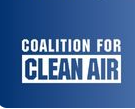
The Toast to Clearing the Air is one of the Coalition for Clean Air’s premier annual events, bringing together influential leaders from government, business, and nonprofit sectors for an evening of networking, collaboration, and meaningful discussions on the future of
December 23, 2025 Read Full Article
Podcast: Preparing for UK ETS: Key Compliance Requirements
(DNV) The UK Emissions Trading System (ETS) will apply to shipping from 1 July 2026, introducing carbon pricing for UK domestic voyages and all in-port emissions in the UK. While similar to the EU ETS scheme, UK ETS has distinct requirements that operators must understand. In our latest Maritime
December 22, 2025 Read Full Article
Evonik Secures Legal Protection for Its 3-Stage Biogas Upgrading Process
(Bioenergy International) Germany-headed global specialty chemicals major Evonik Industries AG (Evonik) has announced that it has won two legal disputes, unquestionably securing EU and US patent rights for the company’s pioneering 3-stage biogas upgrading process with its "SEPURAN" Green membranes. In two
December 22, 2025 Read Full Article
Biochar, Biocoal, or Biocarbon – IBTC Publishes Revised Terminology Reference
(Bioenergy International) As biocarbon moves from niche applications to large-scale industrial use, policy frameworks, investment decisions, and procurement strategies increasingly depends on clear and reliable terminology described in the International Biomass Torrefaction and Carbonisation Council (IBTC) Biocarbon Terminology, Version 3. Over recent
December 22, 2025 Read Full Article
Community Leadership & Civil Advocacy Certificate (CLCA)
(Shepherd University) Stubblefield Institute for Civil Political Communications is offering the class, Community Leadership and Civil Advocacy (CLCA), in the spring 2026 semester. This class will be of interest to anyone seeking to build advocacy skills and network with local leaders.
December 22, 2025 Read Full Article
MOL Group Marks New Milestone with Successful SAF and HVO Production Tests
(Biofuels International) MOL Group has completed a successful production test of hydrotreated vegetable oil (HVO) and sustainable aviation fuel (SAF) at its Slovnaft refinery in Bratislava, marking a significant step in the company’s energy-transition strategy. During the trial, HVO was produced by
December 22, 2025 Read Full Article
Indian Researchers Develop Stable Liquid Hydrogen Transport System
by Uma Gupta (PV Magazine) Researchers at MIT World Peace University (MIT-WPU) in India have developed a liquid organic hydrogen carrier (LOHC) system that enables hydrogen to be transported in a stable liquid form. The system is non-flammable, non-explosive, and can be
December 22, 2025 Read Full Article
SSA Becomes First Airport in Brazil to Supply SAF for Commercial Operations
by Joey Stoate (Airport Industry News) Salvador Bahia Airport (SSA) has become the first airport in Brazil to supply Sustainable Aviation Fuel (SAF) for commercial operations following the introduction of its regular use in November. The use of SAF at SSA brings
December 22, 2025 Read Full Article
Highwater Ethanol Reaches 1 Billion Gallons Of Ethanol Production
(Minnesota Bio-Fuels Association) Minnesota Bio-Fuels Association (MN Bio-Fuels) producer member, Highwater Ethanol, reached a new milestone when it produced its one-billionth gallon of ethanol on Dec 12. Established in 2006, Highwater Ethanol began producing ethanol at its plant in Lamberton, MN in
December 22, 2025 Read Full Article
Alternative Ship Fuels Make Waves in Pacific Northwest Ports
by Tom Banse (Salish Current/News from the States) ... Felleman (Fred Felleman, elected Seattle port commissioner) was dismayed earlier this fall when a United Nations-led push to decarbonize the marine shipping industry went aground under threat of punitive trade sanctions from the
December 22, 2025 Read Full Article
The Digest’s 2025 Multi-Slide Guide to Integrated Dynamics
by Jim Lane (Biofuels Digest) Integrated Dynamics focuses on next-generation biorefineries by leveraging rugged, naturally advantaged microbes known as hyperthermophiles. These microbes grow in temperatures above 85ºC, which implicitly excludes microbial contaminants—a critical advantage, as up to 10% of ethanol ferments are compromised. Hyperthermophiles
December 22, 2025 Read Full Article
New Treasury and IRS Guidance Addresses 45Q Carbon Capture Credit Risks
by Vasil Velev (Carbon Herald) The Treasury Department and the Internal Revenue Service have released new guidance aimed at keeping the federal carbon capture tax credit functioning smoothly through a period of regulatory uncertainty, offering a temporary compliance pathway for companies
December 22, 2025 Read Full Article
European Clean Ammonia Summit 2026 --- April 22-23, 2026 --- Cologne, Germany

ACI is delighted to announce the 3rd European Clean Ammonia Summit. Following the success of the 2nd edition, this upcoming summit aims to continue fostering vital dialogue and partnerships across the entirety of the clean ammonia value chain – from hydrogen
December 19, 2025 Read Full Article
Clean Cooking, Real Impact: How Biofuel Innovation Is Empowering Women, Jobs In Nigeria
by Oluseyi Taiwo-Oguntuase (Independent) Lilian Aremu, Vice President of Operation Green Energy Biofuels and Co-Founder of Kike Technologies, is a social entrepreneur and transformational leader. In this interview with SEYI TAIWO-OGUNTUASE, she discussed the organisation’s pioneering efforts in expanding access to clean
December 19, 2025 Read Full Article
BDO Zones: A Proven Program to Drive On-Site SAF Production for Airports and Regions – Webinar Available On Demand
(Biofuel Development Opportunity Zone Initiative/Ecostrat) Ecostrat Inc. and the BDO Zone Initiative, in collaboration with the Airport Regions Council (ARC) hosted a joint webinar titled “BDO Zones: A Proven Program to Drive On-Site SAF Production for Airports and Regions.” The
December 19, 2025 Read Full Article
Hydrogen Emissions Are ‘Supercharging’ the Warming Impact of Methane
by Ayesha Tandon (Carbon Brief) The warming impact of hydrogen has been “overlooked” in projections of climate change, according to authors of the latest “global hydrogen budget”. The study, published in Nature, is the most comprehensive analysis yet of the global hydrogen cycle,
December 19, 2025 Read Full Article
AFRAA and AfriSAF Sign Landmark MOU to Accelerate Sustainable Aviation Fuel Production Across Africa
(Airspace Africa) The African Airlines Association (AFRAA) and the African Sustainable Aviation Fuels Alliance (AfriSAF) have taken a decisive step toward decarbonising African aviation with the signing of a comprehensive Memorandum of Understanding (MOU) focused on scaling up Sustainable Aviation Fuels
December 19, 2025 Read Full Article
Are We on Track to Meet Long-Term SAF Targets?
by Archie Brown (IBA) ... “How much capacity would each region need in place by 2030 to stay on a credible long-term decarbonisation path?” Using ICAO’s 5% decarbonisation figure as a benchmark and combining ICAO’s latest regional SAF production capacity projections with
December 19, 2025 Read Full Article
Neste Supplies Sustainable Aviation Fuel to Cathay Group Scaling up the Use of SAF across Three Major Aviation Regions
(Neste) Neste and Cathay Group have agreed on the supply of Neste MY Sustainable Aviation Fuel™ for the group’s aviation operations across three major aviation regions: Europe, the United States, and Asia-Pacific. This agreement supports Cathay to scale up its use of sustainable
December 19, 2025 Read Full Article
New Zealand Initiatives Announced on Electric Aircraft, Hydrogen Refuelling and Carbon Removals
by Tony Harrington (GreenAir) Air New Zealand has commenced testing of a battery-electric BETA Alia CX300 aircraft, ahead of commercial evaluation of cargo flights with a second aircraft in 2027. Together with a technical team from the manufacturer, US-based BETA Technologies,
December 19, 2025 Read Full Article
Asia-Pacific Study Reveals Pessimistic Outlook for SAF Uptake by 2030 as Singapore Details Levy
by Tony Harrington (Green Air) A new assessment of sustainable aviation fuel across the Asia-Pacific region highlights low expectations of usage by 2030 without urgent policy support, saying multiple countries have proposed and discussed SAF targets but few have firm targets
December 19, 2025 Read Full Article
Airfreight Giants DHL Express and FedEx Announce Big US SAF Deals
by Tony Harrington (Green Air) Two of the world’s largest airfreight companies, DHL Express and FedEx, have announced fresh deals to buy sustainable aviation fuel in the US, advancing separate commitments that by 2030, SAF will comprise at least 30% of
December 19, 2025 Read Full Article
ICAO Releases First-Ever Growth Factor for Airlines’ CORSIA Offsetting Requirements
by Christopher Surgenor (Green Air) ICAO has confirmed governments participating in its CORSIA scheme will shortly be informing airlines of their first-ever carbon offsetting requirements under the international agreement. The emissions data collected or estimated from 138 member states was used
December 19, 2025 Read Full Article
Growth Energy Urges Courts to Reject Refinery SRE Challenges
(Growth Energy) Growth Energy, the nation’s largest biofuel trade association, filed briefs in the U.S. Courts of Appeals for the 10th and 11th Circuits yesterday urging the courts to reject attempts by refiners to circumvent recent U.S. Supreme Court precedent on
December 19, 2025 Read Full Article
Citroën Berlingo Promote More Sustainable Mobility in Europe as part of the HVO Aurora Trial
(Stellantis) • The Citroën Berlingo, powered by HVO (hydrotreated vegetable oil), returns home to visit the Vigo production center as part of a European tour organized by Stellantis and SPH3. This event is part of the HVO Aurora Trial, an initiative that
December 19, 2025 Read Full Article
IFM Investors Launches Texas-Based Mobius Renewables, a Global Low Carbon Fuels Platform
(IFM Investors) IFM Investors (“IFM”) today announced the formation of Mobius Renewables (the “Company”), a new global, vertically integrated low carbon fuels platform established to accelerate the development, production, distribution and commercialization of biomethane at scale across North America and Europe.
December 19, 2025 Read Full Article
Inpasa Announces a New Biorefinery in Rondonópolis (MT) and an Expansion in Nova Mutum, Totaling R$ 3.48 Billion in Investments in the State.
(Inpasa) Inpasa, the largest grain ethanol biorefinery in Latin America, announces a new investment cycle in Mato Grosso, totaling R$3.48 billion. The package includes the construction of a new unit in Rondonópolis and the expansion of the Nova Mutum biorefinery, consolidating
December 19, 2025 Read Full Article
The Digest’s 2025 Multi-Slide Guide to WSU Sustainable Aviation Fuel Research.
by Jim Lane (Biofuels Digest) WSU led the NARA project, which achieved the first commercial flight using jet fuel derived from wood in 2016. Utilizing forest harvest residuals, the Northwest region has a total potential SAF production of 6.5 million bone
December 19, 2025 Read Full Article
Buying Clearance to Fly: SAF and Why Aether Fuels Is Advancing in Singapore
by Jim Lane (Biofuels Digest) ... Aether Fuels is moving forward with a new project in Singapore, extending its footprint in one of the world’s most strategically important aviation hubs. For a company focused on scaling Sustainable Aviation Fuel (SAF) from waste
December 19, 2025 Read Full Article
GHG Protocol Public Consultations Public Comment DEADLINE extended to January 31, 2026
(Greenhouse Gas Protocol) Public consultation is a critical component of GHG Protocol’s Standard Development and Revision Procedure, providing an opportunity for all stakeholders to contribute feedback on key topics related to GHG Protocol standards and guidance. Two public consultations are actively underway: One focuses
December 19, 2025 Read Full Article
Secretary Naig Announces 108 Renewable Fuels Infrastructure Projects to Expand Access to E15, Biodiesel in Iowa
(Iowa Department of Agriculture and Land Stewardship) Projects in 46 counties receive cost-share grants through the Renewable Fuels Infrastructure Program -- Iowa Secretary of Agriculture Mike Naig announced today that the Iowa Renewable Fuels Infrastructure Program (RFIP) Board approved 108 projects during their
December 19, 2025 Read Full Article
Forging Our future: Public Interests and Property Rights: The Pipeline Looms in the 2026 Legislative Season
by Emily Boevers (Waverly Newspapers) ... Today, limited options exist to legally seize, use or redistribute property owned by another. Zoning laws are one example of limitations on property use. Voluntary easements grant another opportunity to use one’s property for limited
December 19, 2025 Read Full Article
Treasury, IRS Deliver 45Z Proposal to White House OMB
by Erin Krueger (Ethanol Producer Magazine) The U.S. Department of the Treasury and Internal Revenue Service on Dec. 17 delivered a proposed rule to set 45Z clean fuel production credit guidance to the White House Office of Management and Budget. OMB
December 19, 2025 Read Full Article
EPA: 8 New SRE Petitions Filed, 25 SRE Petitions Now Pending
by Erin Krueger (Ethanol Producer Magazine) The U.S. EPA on Dec. 18 released new data showing eight new small refinery exemption (SRE) petitions have been filed under the Renewable Fuel Standard in the past month. A total of 25 SRE petitions
December 19, 2025 Read Full Article
Request for Information on the Tech Labs Initiative for the U.S. National Science Foundation DEADLINE January 20, 2026
(National Science Foundation/SAM.gov) The U.S. National Science Foundation (NSF), through its Directorate for Technology, Innovation and Partnerships (TIP), intends to launch the Tech Labs program: a bold, flexible, and outcomes-driven initiative designed to accelerate practical research with real-world applications. Tech Labs
December 18, 2025 Read Full Article
Notice of Request for Information; Accelerating the American Scientific Enterprise DEADLINE December 26, 2025
(Office of Science and Technology Policy/Federal Register) ACTION: Request for information. SUMMARY: The Office of Science and Technology Policy (OSTP) requests input from all interested parties on Federal policy updates that aim to accelerate the American scientific enterprise, enable groundbreaking discoveries, and ensure that
December 18, 2025 Read Full Article
Comprehensive Hands-On ASTM Jet Fuel and SAF Test Method Training --- Various Dates in 2026: March 3-5; May 12-14; August 25-27; November 3-5 --- Sugar Grove, IL

In accordance with ASTM D1655 and D7566 jet fuel/SAF testing standards, students will learn comprehensive test methods and proper equipment set-up/maintenance to ensure reliable sample results. This comprehensive class provides hands-on experience in testing jet fuel and SAF samples using
December 18, 2025 Read Full Article
Intellectual Property 101: An Introduction to Intellectual Property for Biotech and Pharma --- January 14, 2026 --- ONLINE

Join SIMB's Education and Outreach Committee for a special webinar to kick-off 2026. This session offers a practical introduction to intellectual property in biotech and pharma industries, with a focus on patents as a cornerstone of innovation protection. Attendees will learn
December 18, 2025 Read Full Article
Awards Nominations Open for Symposium on Biomaterials for Fuels and Chemicals Awards DEADLINE January 30, 2026
Society for Industrial Microbiology & Biotechnology Awards nominations open. DEADLINE January 30, 2026 Charles D. Scott Award Deadline: January 30, 2026 The Charles D. Scott Award is presented each year at the Symposium on Biomaterials for Fuels and Chemicals. The nominees must have
December 18, 2025 Read Full Article
CALL FOR ABSTRACTS 48th Symposium on Biomaterials, Fuels and Chemicals --- May 3-6, 2026 --- New Orleans, LA DEADLINE February 10, 2026

Focused on the latest in microbiology and biotechnology for fuels, chemicals, and biomaterials -- Call for Abstracts Abstracts for invited talks, posters, contributed oral presentations and student oral session presentations are now being accepted. DEADLINE February 10, 2026 General Instructions NOTE: When entering your abstract
December 18, 2025 Read Full Article
48th Symposium on Biomaterials, Fuels and Chemicals --- May 3-6, 2026 --- New Orleans, LA

Focused on the latest in microbiology and biotechnology for fuels, chemicals, and biomaterials -- This is a special conference of the Society for Industrial Microbiology and Biotechnology. READ MORE
December 18, 2025 Read Full Article
Australian Trade & Investment Commission’s Renewable Fuels Webinar Series Recordings Available
(Australian Trade & Investment Commission) This renewable fuels webinar series presents conversations as Australia continues to develop its renewable fuel ecosystem with the AU$1.1B Cleaner Fuels Program. Webinar Recordings To access the recordings of our informative discussions please click the below links. Webinar
December 18, 2025 Read Full Article
Investment and Operating Support for Bio-CCS through Reverse Auction DEADLINE August 13, 2026
(Energimyndigheten) Companies that want to contribute to negative emissions through the capture, transport and geological storage of biogenic carbon dioxide (bio-CCS) are welcome to participate in the second call through reverse auction. Last day for application2026-08-13 23:59 Funds announcedSEK 10.17 billion According to
December 18, 2025 Read Full Article
Reolum Unveils Third e-Methanol Plant Plans
(Bioenergy International) In Spain, Reolum Renovables SL (Reolum), a developer of renewable energy and power-to-X (PtX) projects, has announced its third PtX project in the Castile and León region — in Monfarracinos, Zamora. Located in the Zamora Norte Industrial Park in Monfarracinos,
December 18, 2025 Read Full Article
CPTech Secures US and Saudi Patents for Pyrolysis-Oil Upgrading Process
(Bioenergy International) UK waste plastic recovery technology developer Pyroplast Energy Ltd, currently trading as Clean Planet Technologies (CPTech), part of the Clean Planet Group, has announced that its core pyrolysis-oil upgrading process has now been formally patented in both the United
December 18, 2025 Read Full Article
ADBA Scottish Conference 2026 --- March 4, 2026 --- Edinburgh, Scotland
Bringing together industry leaders, policymakers and practitioners to explore the future of anaerobic digestion and biogas in Scotland. Expect practical workshops, policy discussion, investment insights and networking with experts from across the AD value chain. READ MORE
December 18, 2025 Read Full Article
CALL FOR SPEAKERS North American Biocarbon Conference --- March 31 - April 2, 2026 --- Nashville, TN DEADLINE December 31, 2025

The North American Biocarbon Conference, co-located with the International Biomass Conference & Expo, brings together the full value chain of carbon-negative and carbon-smart technologies in one powerful, integrated event. By aligning biocarbon producers, biomass power generators, biochar innovators, carbon-removal buyers,
December 18, 2025 Read Full Article
Building Market Share in 2025, Positioning for Sustainable Growth in 2026
(Bunker One) A Bunker One Africa Perspective -- As 2025 draws to a close, the African bunkering landscape continues to reflect both opportunity and complexity. Shifting trade patterns, regional demand fluctuations, and the evolving regulatory environment have shaped a year defined by
December 18, 2025 Read Full Article
Why Biofuel Additives Are Essential for Next-Generation Fuels
by Hugh Grant (Axcess News) The global biofuel additives market is witnessing significant momentum as the world increasingly shifts toward sustainable and low-carbon energy solutions. Biofuel additives are essential components that enhance the quality, efficiency, stability, and performance of biofuels such
December 18, 2025 Read Full Article
Kuehne+Nagel and SWISS Strengthen Partnership to Accelerate More Sustainable Aviation
(Kuehne+Nagel Air Logistics) Support the market introduction of synthetic aviation fuels produced by Synhelion; Long-term offtake agreement provides Synhelion with planning security to scale its technology Kuehne+Nagel, one of the world’s leading logistics providers, and Swiss International Air Lines (SWISS), Switzerland’s premium airline,
December 18, 2025 Read Full Article
Wärtsilä's Fuel-Flexible Engines Selected to Reduce Emissions on Two New Vessels for Brazilian Operator
(Wärtsilä/CISION) Technology group Wärtsilä will supply the main engines for two new pusher tugs being built for Brazilian operator AMAGGI. The ships are under construction at the Beconal shipyard, located in Manaus, Brazil, and are designed with a focus on decarbonised
December 18, 2025 Read Full Article
World Agri-Tech Innovation Summit --- March 17-18, 2026 --- San Francisco, CA

Meet the global leaders driving sustainable agricultural practices in San Francisco on March 17–18, 2026. Join 2,000+ global leaders from agribusinesses, technology giants, food brands, farmers, policymakers, investors, and start-ups for strategic networking, exclusive industry insight and start-up discovery at next year’s
December 18, 2025 Read Full Article
Hawaiian and Alaska Airlines, Par Hawaii and Pono Energy Partner to Advance the Hawai‘i-Based Market, Supply Chain for Sustainable Aviation Fuel Production
(Alaska Air/Hawaiian Airlines) The combined airlines will take the first deliveries of Hawaiʻi-made SAF in early 2026. The investment enables SAF production for more sustainable future flying, diversifies Hawaii’s fuels industry, strengthens energy independence and supports agriculture. Hawaiian Airlines and Alaska Airlines
December 18, 2025 Read Full Article
The Digest’s 2025 Multi-Slide Guide to Merrick & Company (Biomanufacturing)
by Jim Lane (Biofuels Digest) Merrick focuses on scaling biomanufacturing projects across fuels, food, and materials, emphasizing design excellence to de-risk commercialization. Successful scale-up relies on structured steps, starting from bench trials to commercial process design. Using the Front-End Loading (FEL) process is






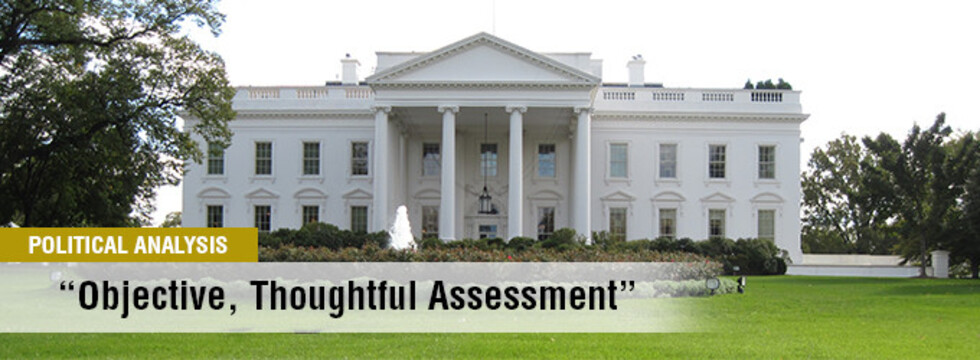




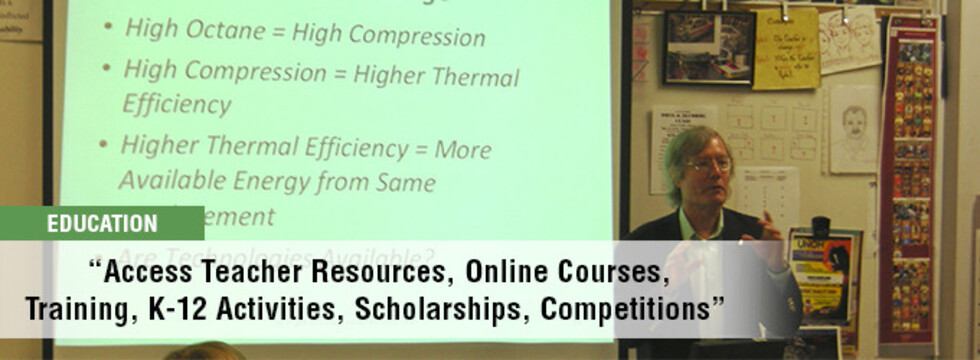













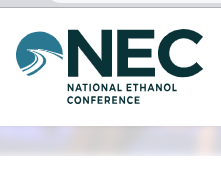


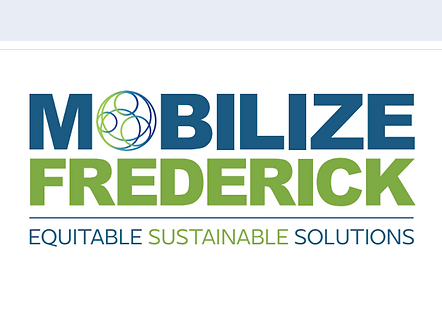




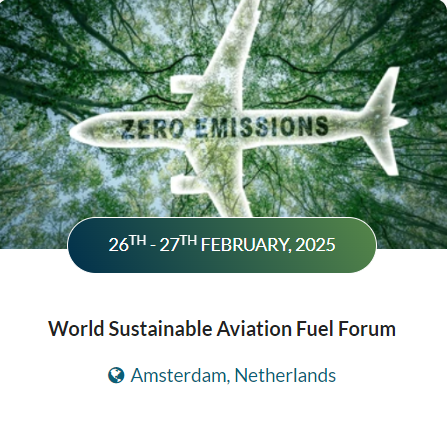






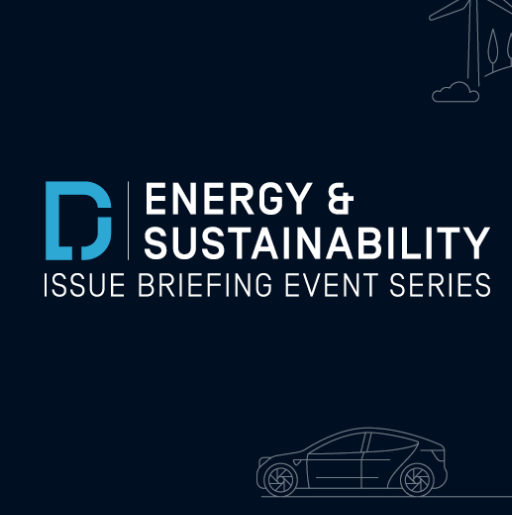



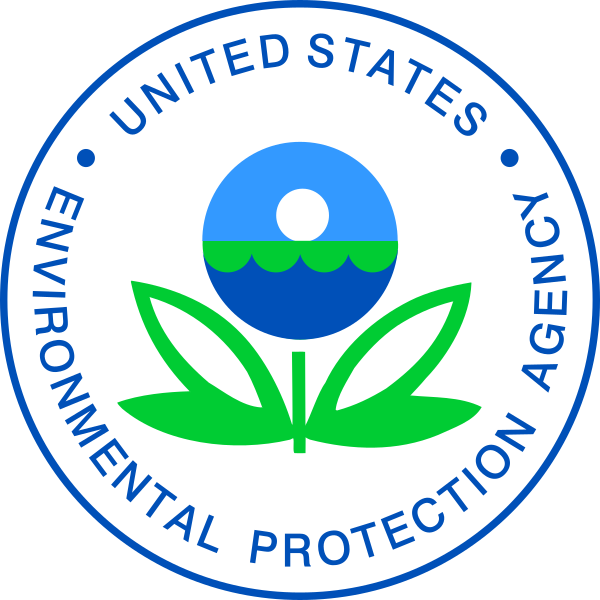





.jpg)




